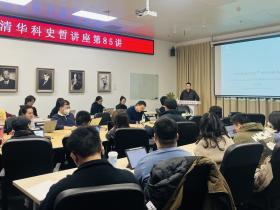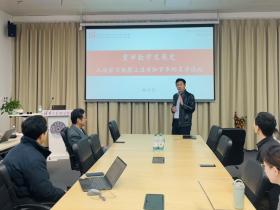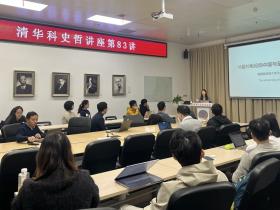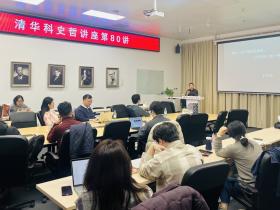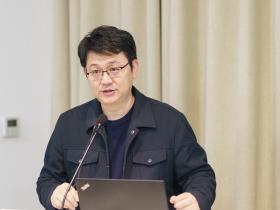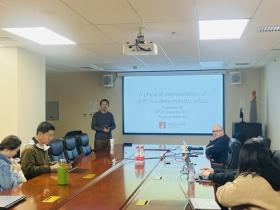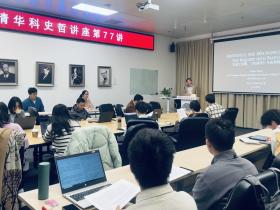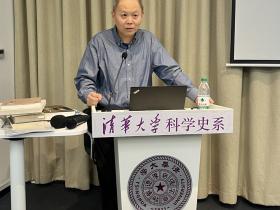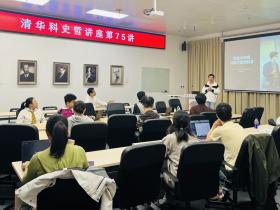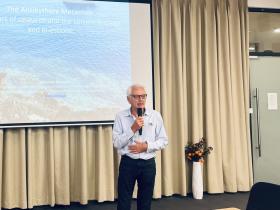On November 25, 2024, the 81st and 82nd sessions of the THU History and Philosophy of Science Lecture Series were held as scheduled in Room B206 of the Humanities Building. Chaired by Professor Wu Guosheng, the lectures featured Professor Yuk Hui from the Department of Philosophy at Erasmus University Rotterdam, Netherlands.
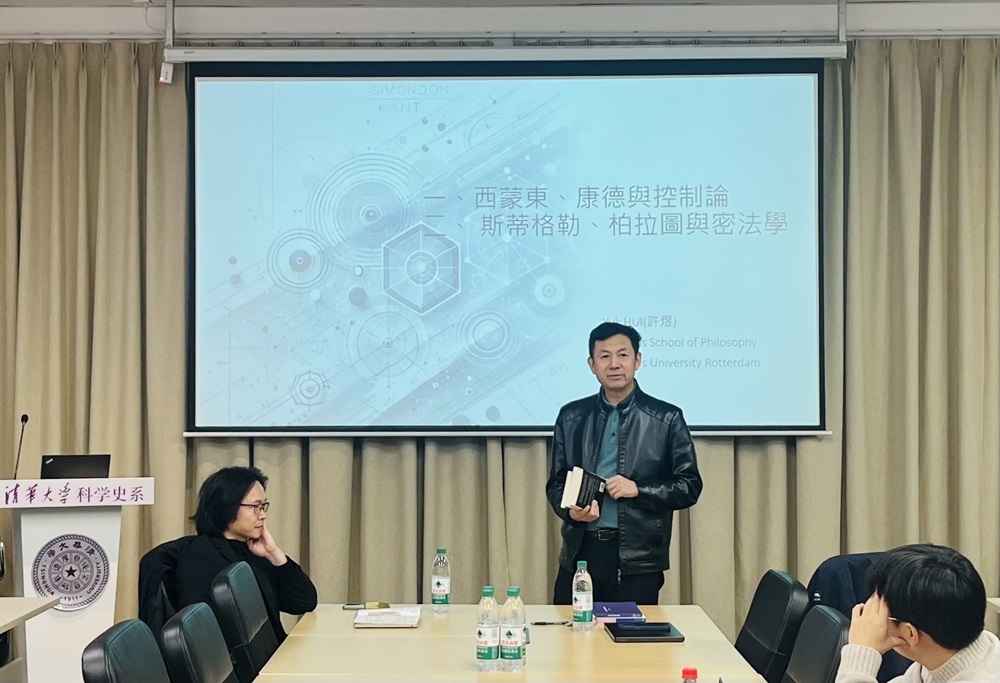
Before his lectures, Professor Yuk Hui first pointed out that today people regard "philosophy of technology" as philosophical reflection on technological phenomena. In contrast, he argued that technology and philosophy share an intimate relationship—technology is a core philosophical problem. However, the history of philosophy has consistently repressed reflections on technology. Thus, what is needed is to return to the history of philosophy with technological questions, uncovering the repressed technological conditions within it. These two lectures can be understood as an explication of this method.
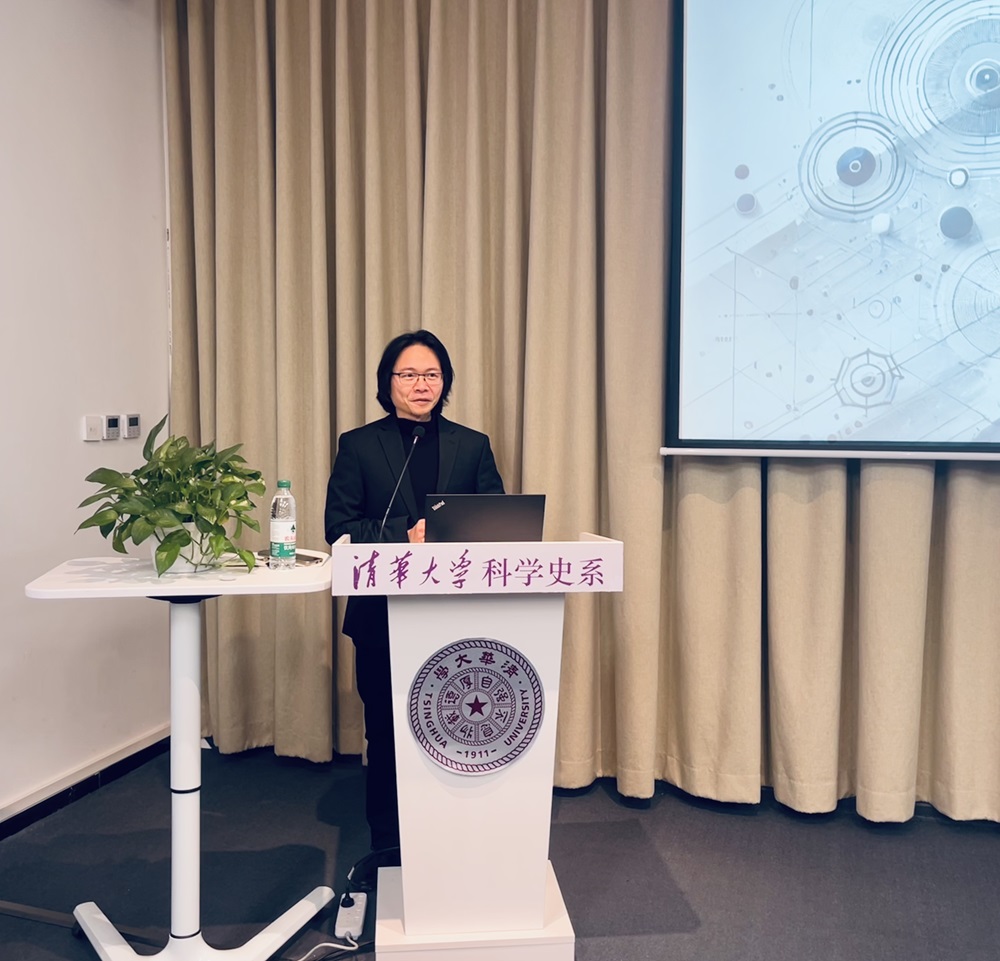
Morning Lecture: "Simondon, Kant, and Cybernetics"
Professor Hui began with a statement from Simondon’s Epistemology of Cybernetics: "Kant could only deal with cybernetics in the Critique of Judgment."
Simondon critiqued and reconstructed cybernetics philosophically, attempting to develop a more universal cybernetics. In On the Mode of Existence of Technical Objects, Simondon proposed the process of concretization of technical objects, understanding them from an evolutionary perspective. At the same time, technical objects differ from living beings: they remain perpetually in the process of becoming organic without fully achieving it. Simondon distinguished three modes of existence for technical objects: technical elements, technical individuals, and technical ensembles. Technical elements are represented by diodes and transistors; technical ensembles are exemplified by laboratories or factories where machines work together. A technical individual emerges when a technical object attains a degree of autonomy—able to overcome contingencies (e.g., noise) by transforming disturbances into new equilibria. The core of this autonomy lies in establishing a circular, nonlinear causality. Circular causality is Simondon’s translation and reconstruction of cybernetics’ feedback concept. The subsequent question is: What is the relationship between Kantian philosophy and this cybernetic logic?
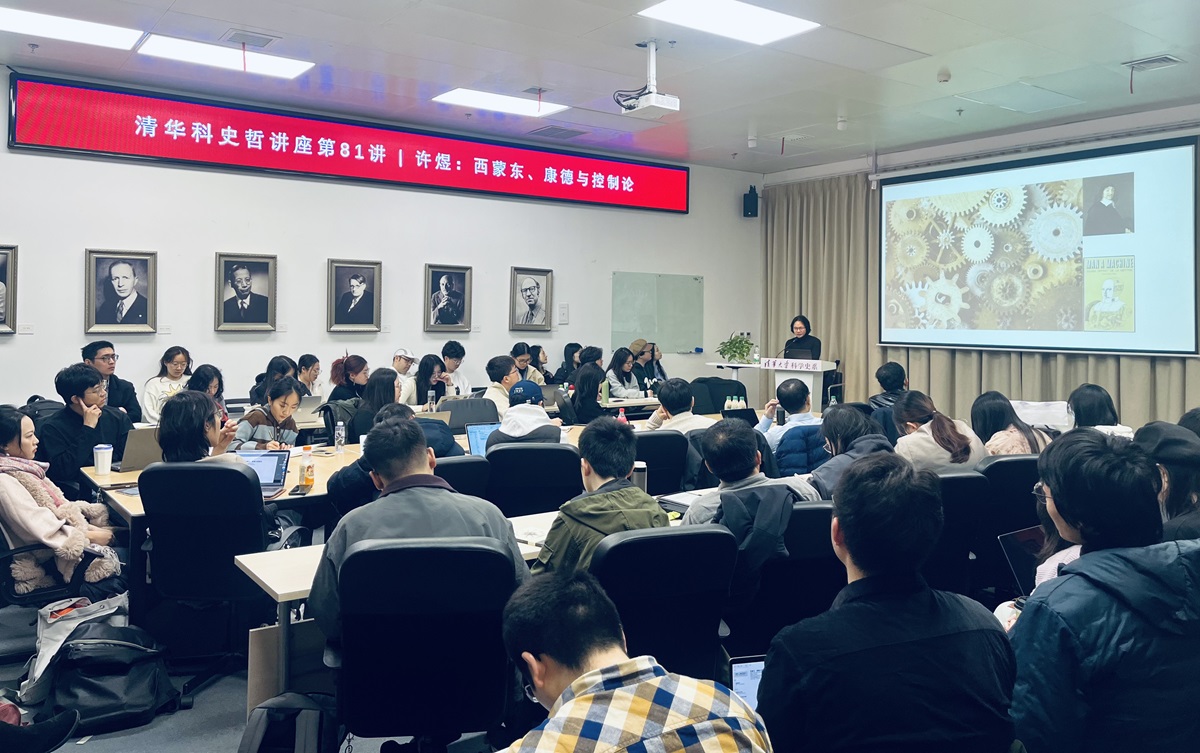
Professor Yuk Hui first reviewed the mechanistic views of early modern philosophers. Represented by Descartes’ organ metaphor in Treatise on Man, Hobbes’ natural philosophy, and Vaucanson’s defecating duck automaton, 17th-century philosophy sought to understand all things—including life—through linear causality by reflecting on and borrowing contemporary technologies. Linear causality conceives cause and effect as transmitted along a single chain. Its two problems are: (1) inability to handle missing links, and (2) inevitable infinite regress leading to a first cause.
Professor Yuk Hui further noted that Kant, in his pre-critical period, already discussed how animal bodies are possible, later systematically breaking the mechanistic linear-causal view in the Critique of Judgment. Kant’s core concept for constructing nonlinear causality is reflective judgment (reflektierende Urteilskraft). Reflective judgment links aesthetic judgment and teleological judgment. Unlike determinative judgment—which applies universal laws to particular phenomena—in reflective judgment, the universal is not given in advance. Reflective judgment starts from the particular to gradually discover universal laws. This search is not inductive but a heuristic movement that returns to itself and restarts anew. In other words, reflective judgment is also a recursive movement. Recursive movement must be distinguished from mere circular motion: repetitive circularity follows A-B-C-A, while recursive circularity follows A-B-C-A', where returning renews itself.
The recursive movement of reflective judgment enabled Kant to explain organisms’ essence through nonlinear causality. In organisms, parts interact with parts and with the whole via nonlinear causal relations, making the organism both cause and effect of itself without invoking a first cause. Kant also critiqued Spinoza, arguing that Spinoza’s causality entails only necessity, whereas Kant’s reflective judgment emphasizes contingency’s role in judgment. A key reason Kant could discuss nonlinear causality in the third Critique was his engagement with contemporary scientific theories, such as Blumenbach’s concept of Bildungstrieb (formative drive). Kant philosophized this scientific concept, formulating recursive reflective judgment. Through recursion, Professor Yuk Hui aimed to connect Kant to contemporary technology. This connection already occurs in Kant’s own texts—for example, in the first draft introduction to the third Critique (published posthumously), he mentions the concept of "technique of nature."
In the first chapter of Cybernetics, Wiener distinguishes Newtonian time from Bergsonian time. The Newton-Bergson opposition corresponds to mechanistic-vitalistic, repetitive-creative, and reversible-irreversible dichotomies. Wiener argued cybernetics overcomes the opposition between mechanism and vitalism. Core concepts enabling this synthesis are feedback and information. Feedback directly relates to nonlinear causality. Cybernetic feedback reintroduces a system’s output as input to optimize the system. Cybernetic systems possess dynamic teleology. Linear-causal mechanism and mystified vitalism are synthesized in cybernetic machines that self-renew through nonlinear causality. In other words, cybernetic machines can simulate organic life in an intelligible manner.
Kant’s third Critique is a pivotal moment in the history of philosophy where nonlinear-causal reflective judgment overcomes mechanism. Kant made organicity a new condition for philosophical thought and developed a preliminary systematic account based on it. Cybernetics is the 20th-century expression and culmination of this condition. Recursive technologies (especially information technologies) developed under cybernetic paradigms in the late 20th century align intrinsically with Kant’s understanding of organicity in the third Critique. By establishing organicity as a condition for thought, Kant laid theoretical foundations for European thought in morality, aesthetics, and politics. If organicity is a crucial condition for European thought and technological reality, Joseph Needham’s proposal—to solve Europe’s technological "dangers" directly through Chinese organicism—requires rethinking. The philosophical condition Kant identified is now nearing its "end." Professor Yuk Hui called for rereading the history of philosophy through contemporary technological conditions to find new conditions for philosophical thought capable of overcoming cybernetic machines.
After the lecture, faculty and students actively questioned Professor Yuk Hui about the academic history of Simondon studies, the relationship between Kant’s reflective judgment and contingency, and whether Kantian freedom can truly be constructed and simulated by cybernetics. Professor Yuk Hui provided detailed answers.
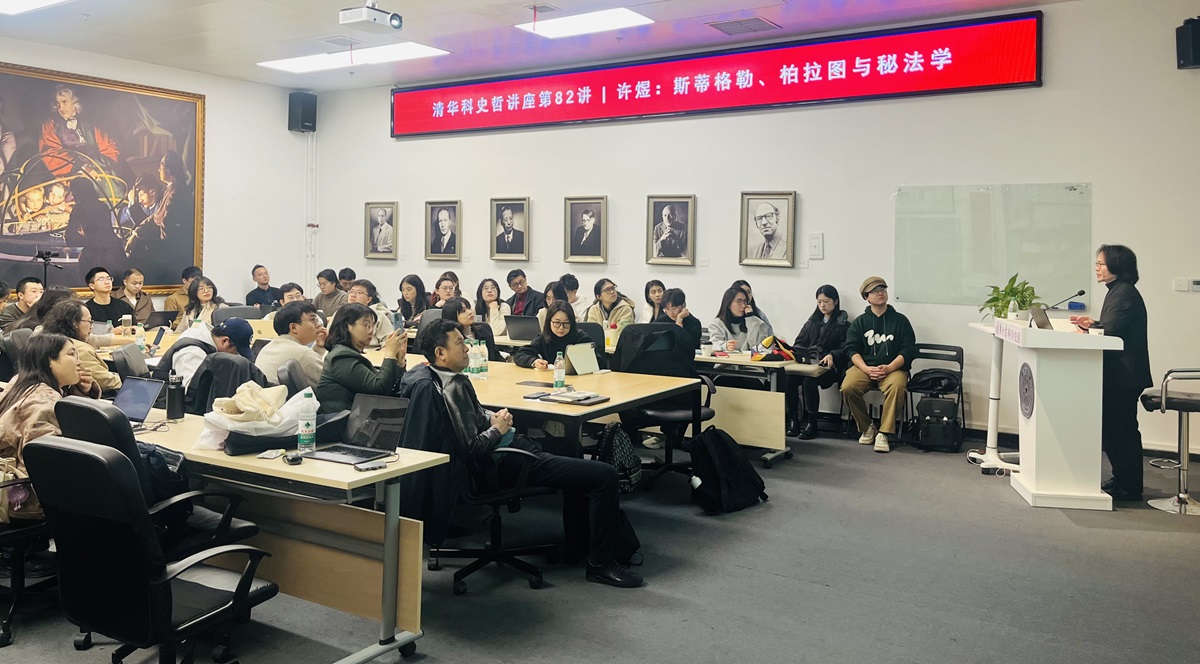
Afternoon Lecture: "Stiegler, Plato, and Esotericism"
Professor Yuk Hui began with a statement from Stiegler’s early work Persephone, Oedipus, Epimetheus: "The eidos (Form/Idea) exists neither in the world nor in consciousness, yet without it nothing would exist."
In the Meno, Socrates poses the famous Meno’s Paradox: If we know what virtue is, we need not seek it; if we do not know, we could not recognize it even if encountered. Socrates resolves this: I have not forgotten; through recollection (anamnesis), I can remember virtue. Plato’s Forms exist neither in the phenomenal world nor in consciousness but are accessed through recollection. In the Phaedrus, Plato offers another myth about the soul: Human and divine souls ride chariots toward the vault of heaven. Divine horses are both white, ascending lightly and smoothly. One of human horses is black and unruly; the horses struggle, causing the soul to fall to earth—hence metempsychosis. Only some souls (e.g., philosophers’) grow wings to ascend. Philosophers "see" the Form of Beauty through recollection. To gain knowledge of this Form, we require tools or arts (technē) of recollection, such as writing. As a carrier of memory, writing enables recollection. Yet, carriers of memory are ambivalent. The Phaedrus states writing causes forgetfulness. Derrida and Stiegler used this ambivalence of technē to understand the relationship between technology and philosophy—technē is indispensable yet repressed in Plato.
Professor Yuk Hui then noted that to understand "without it nothing would exist," one must turn to the Symposium’s discussion of eros (love/desire). The Symposium harbors religious or esoteric rituals revealed through Socrates’ discourse on eros. Socrates recounts Diotima’s teachings—he needs a teacher (Diotima) to instruct him on eros. Many Hellenists speculate from the text that Socrates may have participated in the Eleusinian Mysteries, with Diotima as his initiator. In these rituals (Lesser and Greater Mysteries), initiates undergo ascent and enlightenment, potentially seeing things invisible in ordinary life. What is eros? According to Socrates, Eros is neither beautiful nor ugly, neither rich nor poor, but intermediate—child of Resource (Poros) and Poverty (Penia). Eros is the pursuit of the desired object, which we desire precisely because we do not possess it. Yet we can never possess the desired object.
The desired object shares an analogical relationship with the Form: neither is given or attainable in the world. On one hand, we cannot possess the desired object; on the other, without it, nothing would be possible. From a scientistic view, Forms cannot be proven or tested experimentally. Yet, we need Forms and desired objects to produce science, art, philosophy, and literature. The Form—existing neither in the world nor consciousness—mediates between itself and us through technē. In Plato’s Pharmacy, Derrida revealed writing’s supplementary role regarding Forms. This logic transitions to Stiegler’s theory: in Plato’s Symposium, he discerned what may be called esotericism or esoterics (秘法学). Esoterics pursues the desired object through the mediation of technē.
Citing Stiegler, Professor Yuk Hui explained: Today, the economy of desire is largely driven by drives (pulsions), no longer an economy of desire. The difference between desire and drive is: drives are instinct-like; the drive economy operates through the drives of groups dominated by consumer-technological systems (e.g., addiction), while the economy of desire invests in the desired object. Stiegler’s motivation for this rereading is: How can the pursuit of the desired object become part of the economy of desire again under current technological and industrial conditions? This critiques contemporary technological conditions while calling for renewed pursuit of Forms and desired objects by understanding and transforming carriers of recollection (technē). In other words, we need to reinvent a new libidinal economy—not an economy of drives but of desired objects. Stiegler criticized Simondon for lacking a political philosophy. Yet beyond critique, it is vital to incorporate Simondon’s theory of individuation, presenting it as an ascending path—a theory of pursuing Forms.
After the lecture, faculty and students engaged in in-depth discussion with Professor Yuk Hui. Questions included: What kind of idea does esotericism touch upon? How else might "esoterics" (秘法学) be translated? How do eidos in this context, Lacan’s objet a, and speculative realism relate? Is eidos essentially technologized? Professor Yuk Hui addressed each query exhaustively.
Documented by: Wang Zilai
Reviewed by: Yuk Hui


